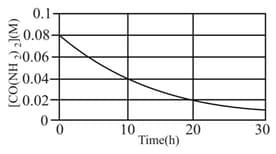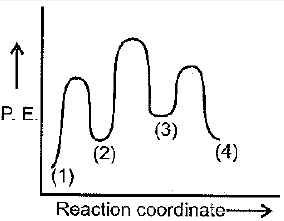Exercise-4
Embibe Experts Chemistry Solutions for Exercise-4
Simple step-by-step solutions to Exercise-4 questions of Chemical Kinetics from Alpha Question Bank for Engineering: Chemistry. Also get 3D topic explainers, cheat sheets, and unlimited doubts solving on EMBIBE.
Questions from Exercise-4 with Hints & Solutions
For the reaction the rate expression is
The correct statement is.
. The reaction is not elementary.
. The reaction is of second order.
. .
Which of the energy values marked as and in the following diagram, will change by the addition of a suitable catalyst?

Urea, decomposes at as Experimental data obtained for the reaction is given in the following plot;

From the graph it can be inferred that-
The decomposition of can be followed by titration with and is found to be a first order reaction. The rate constant is In an experiment, the initial titre value was The titre value will be after a lapse of:
In a second order reaction, of a substance is dissociated in The time taken by of its dissociation is:
A simple mechanism for enzyme-catalyzed reaction is given by the following set of equations:

This is known as the Michaelis-Menten mechanism. The potential energy diagram is shown in the figure. Which of the following sets of identifications is correct? (Assume that the temperature and pressure are constant).
A reaction, the rate constant is expressed as The energy of the activation is:
Consider the following reactions at
(uncatalysed reaction)
(catalyst reaction)
The activation energy is lowered by the catalysed reaction. How many times is the rate of this catalysed reaction greater than that of uncatalysed reaction? (Given )
